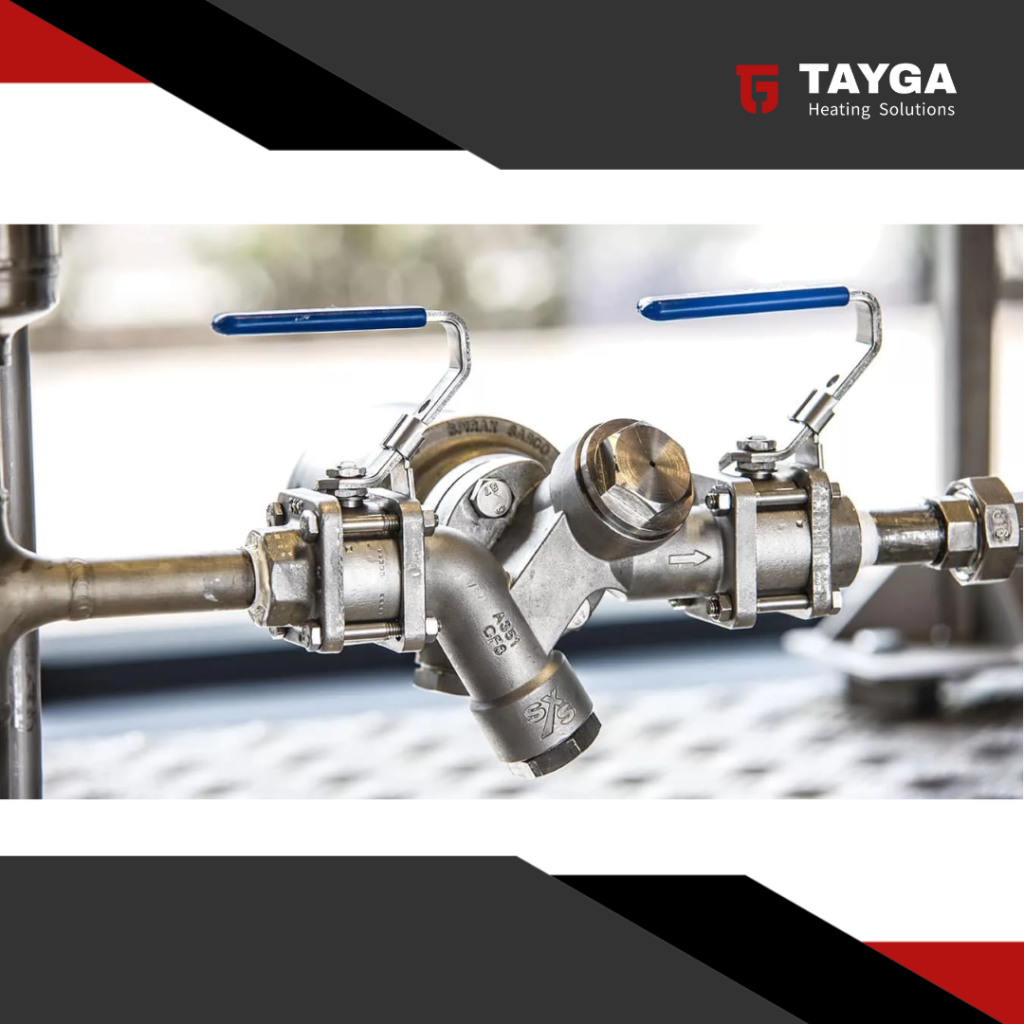“The efficiency and reliability of steam tracing systems are essential to the performance of several industries. Within this context, inspection and maintenance of steam traps is vital to ensure the system operates efficiently and safely.
We will discuss the function of traps below, its applications in steam tracing systems, the importance of regular inspection and recommended practices for maintenance.“
The Function of Traps in Steam Tracing Systems
Paper two purgers
Steam traps play a crucial role in steam trace systems. They are responsible for removing condensate (water) and non-condensable gases from steam lines, ensuring that only pure vapor circulates in the system. This is essential to maintain thermal efficiency and prevent damage to equipment..
Consequences of Inefficient Traps
Defective steam traps can cause a variety of problems, including:
- Reduced thermal efficiency: Accumulated condensate reduces heat transfer capacity.
- Product quality issues: Variations in process temperature can affect the quality of the final product.
- Security risks: Condensate buildup can cause water hammer, damaging pipes and equipment.
- Energy waste: Steam leaks represent a significant loss of energy, increasing operating costs.
Types of Steam Traps
Thermodynamic Trap
Ideal for draining condensate from steam pipes, operates based on the difference in pressure and temperature between steam and condensate. It's compact, robust and effective at high pressures.
Boia purge
Mainly used in steam heating equipment, operates by floating a float that opens and closes a valve based on the condensate level. It is efficient in removing large volumes of condensate.
Thermostatic Drain
Also known as air eliminator, This trap is designed to drain air from steam systems, operating based on the temperature difference between air and steam. Essential for starting steam systems and maintaining thermal efficiency.
Inspection of Traps and Condensate Purge Stations
Importance of Regular Inspections
Inspecting steam traps regularly is crucial to ensuring efficient system operation.. Failures and leaks can result in high costs due to loss of steam, poor operational quality and security risks. It is recommended that inspections be carried out at least twice a year.
Inspection Methods
- Visual inspection
Visual inspection involves observing the operation of the trap. If the trap is releasing steam to the atmosphere, you can hear the sound of the steam flow and identify visual problems such as leaks.
- Temperature Inspection
Temperature measurements can help identify whether the trap is working properly. Significant differences in surface temperature may indicate blockages or leaks.
- Ultrasound Inspection
The use of ultrasonic devices allows a more detailed analysis of the operation of traps. This method is highly effective for detecting leaks and obstructions, being recommended for a more accurate and reliable inspection.
Operational Verification
The operational check aims to determine whether there is a need for immediate intervention for maintenance or cleaning. It can frame the operation of a trap under four possible conditions:
- Normal Condition: Condensate is discharged correctly, and the sound of the flow can be heard.
- Obstruction or Freezing Condition: There is no flow, the trap is silent and cold.
- Total Leak Condition: Continuous flow of steam accompanied by metallic sound.
- Partial Leak Condition: Live steam discharge together with condensate, with change in sound during discharge.
Defect Analysis
Some common causes of trap malfunctions include:
- Water hammer: Result in mechanical damage.
- Bad sizing: Affects system efficiency.
- Contaminants and dirt: They can clog the trap.
- Poorly adjusted valves: May cause leaks or blockages.
Identifying and correcting these problems is essential to maintaining steam system efficiency and safety..
Local Operating Test
The local function test involves several steps to verify that the trap is operating correctly:
- Block the upstream flow: Close the upstream shut-off valve.
- Redirect flow to drain: Open the upstream drain and check for release of steam or condensate.
- Check or drain: Test whether the steam trap is releasing steam, condensate or clogged.
This procedure helps to identify whether the trap is in good condition., leaky or blocked, allowing immediate corrective actions.
Conclusion
Proper inspection and maintenance of steam traps is vital to ensure efficiency, safety and economy of steam tracing systems. Efficient traps remove condensate and keep steam pure, avoiding energy waste and potential damage to equipment.
Tayga as an Ideal Partner
Na tayga, We understand the importance of a well-maintained steam trace system. We offer high-performance steam tracing solutions, ensuring efficiency, reliability and innovation. Our experts are ready to help your company optimize its processes and ensure maximum energy efficiency.
Tayga is your ideal partner to raise the standard of your industrial operations, providing customized solutions and specialized technical support.

Investing in Tayga's steam tracing systems ensures efficient operation, safe and economical for your industrial facilities. To learn more about how Tayga heating and insulation solutions can benefit your business, contact us today.

We are available through do site (click here) or by e-mail contato@taygahs.com or at phone and Whatsapp (21) 9.8819-3687.
We also recommend reading our materials on the heating and insulation systems implemented by Tayga (just click and you will be redirected):


